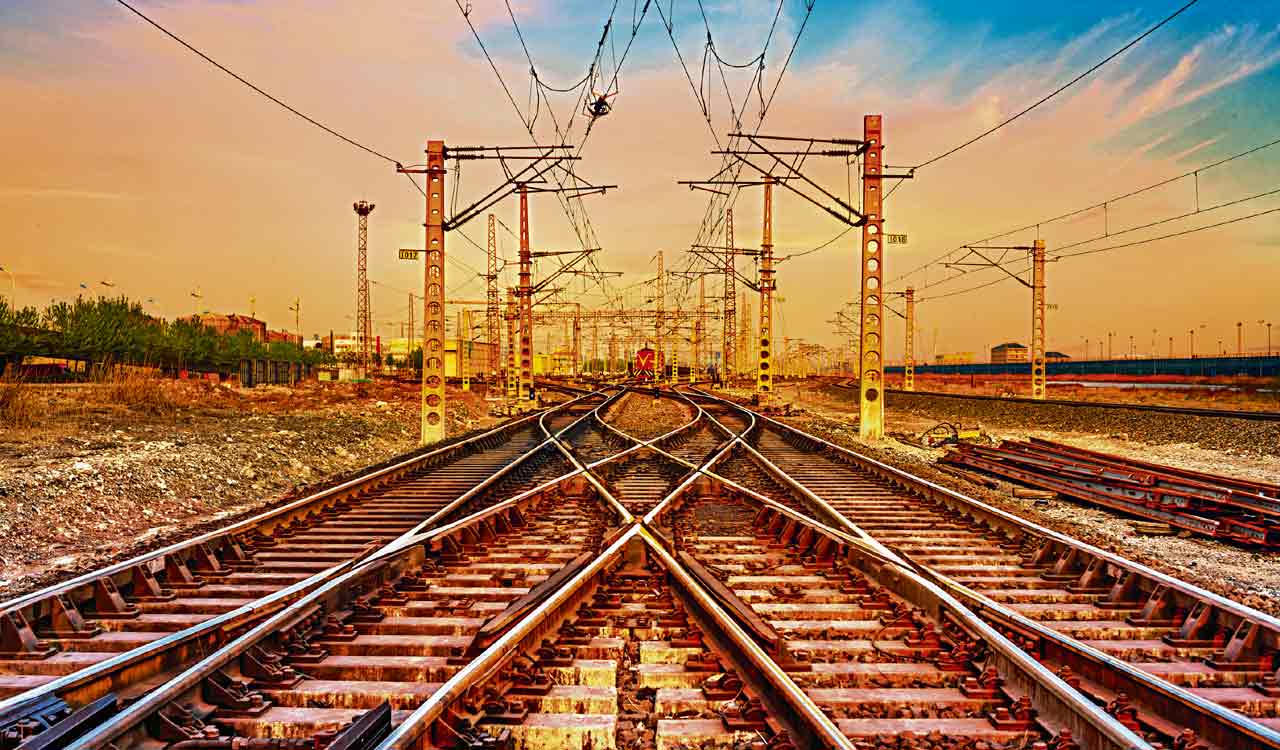Rewind: Rail and regional trade
Strengthening Bangladesh, Bhutan, India, and Nepal Rail Connectivity Infrastructure will enhance subregional trade

By Anita Barik
Intra-regional trade between South Asian nations has been less than 5% of South Asia’s total trade, whereas intra-regional trade constitutes 60% in the European Region, 35% in the East Asian Region and 25% in the South East Asian Region. That makes South Asia one of the least integrated regions in the world. Inefficient connectivity and border crossing are major contributing factors to low trade in the region among various other factors such as tariffs on imported goods and restrictive non-tariff barriers. To achieve better integration of the economies there is a need to create quality infrastructure and efficient cross-border transportation systems that strengthen trade links.
Also Read
In this direction, the Bangladesh, Bhutan, India and Nepal (BBIN) subregional initiative was conceived to create seamless connectivity between the four countries for enhanced subregional trade and movement of people, and to achieve sustainable development.
The Background
To promote the integration of transport networks, the SAARC (South Asian Association for Regional Cooperation) Regional Multi-Modal Transport Study (SRMTS) — undertaken in 2005 — recommended improving transport infrastructure and linkages in the SAARC countries. However, in November 2014, the SAARC Summit held in Kathmandu failed to reach a consensus for the signing of the SAARC Rail and Road connectivity agreements. The Summit declaration highlighted the need to link South Asia with contiguous regions, including Central Asia, and beyond by all modes of connectivity, and directed relevant authorities to initiate national, regional and subregional measures, and necessary arrangements to this end. Following this, efforts commenced negotiating subregional and bilateral connectivity agreements for groupings such as Bangladesh, Bhutan, India and Nepal (BBIN), and India, Myanmar and Thailand (IMT).
South Asia is one of the least integrated regions in the world with intra-regional trade between these nations accounting for less than 5% of South Asia’s total trade
Bangladesh, Bhutan, India, and Nepal together formed the subregional grouping BBIN under whose aegis there are two Sub Regional Joint Working Groups on — Transit and Connectivity, and Water Resources Management and Power/Hydropower.
In a significant development, the BBIN Motor Vehicles Agreement (MVA) was signed by the BBIN countries on June 15, 2015. Since then, the focus of BBIN has been on the implementation of the BBIN Motor Vehicle Agreement. Overland cargo movement between the BBIN countries currently has to face delays and congestion due to infrastructure and procedural bottlenecks at the land borders.
At present, cargo trucks or passenger vehicles from India or Bangladesh cannot enter each other’s territory. Bangladesh’s cargo trucks or passenger vehicles cannot enter Nepal or Bhutan. They have to utilise the services of Indian, Nepalese, or Bhutanese transporters. However, between India, Nepal and Bhutan there is some sort of liberal arrangement for crossing the border.
After the 1965 war between India and Pakistan, the railway communication between India and Pakistan was cut off. Between India and Nepal, there have been continued railway services. Bhutan doesn’t have rail infrastructure to date
The operationalisation of the BBIN MVA aims to provide for easy cross-border movement of vehicles thereby facilitating the seamless movement of people and goods across borders. Besides improving connectivity, the MVA seeks to lead immense savings in transaction costs and time for the business community and contribute to economic development and integration of the region.
BBIN Rail Connectivity
South Asia had an integrated system of railways till 1947. Even after the partition of India, railway transport and communication continued. After the 1965 war between India and Pakistan, the railway communication between India and Pakistan was cut off. Between India and Nepal, there have been continued railway services apart from the disruptions due to upgradation in infrastructural work. Bhutan doesn’t have rail infrastructure to date.
A railway agreement in the Bangladesh, Bhutan, India and Nepal (BBIN) subregion was proposed to develop the railway links and boost connectivity between India’s Northeast and its BBIN neighbours. Though there has not been much development on the BBIN rail agreement, railway transportation between India, Bangladesh and Nepal has expanded in recent times.
There is great potential in integrating BBIN rail connectivity. Railway transportation has an unusual edge for cross-border trade since freight trains need not be transhipped at the border and they can enter the terminals of the other country’s territory, whereas goods transported by trucks have to be trans-shipped onto other trucks at the border.
India-Bangladesh Rail Links
Of the seven operational rail links between India and then East Pakistan (today’s Bangladesh territory) up to 1965, five rail links between India and Bangladesh have been restored and are operational. These rail links are Petrapole (India)-Benapole (Bangladesh), Gede (India)-Darshana (Bangladesh), Singhabad (India)-Rohanpur (Bangladesh), Radhikapur (India)-Birol (Bangladesh) and Haldibari (India)-Chilahati (Bangladesh).
The non-operational rail links are:
Karimganj/Mahisasan (India)-Shahbazpur (Bangladesh): Rehabilitation of the railway track from Shabazpur to Kulaura has been included under the Line of Credit extended by the Government of India to Bangladesh. Work on this line is in progress.
Chengrabandha (India)-Burimari (Bangladesh): The line between New Mal Junction and Changrabandha on the Indian side is now converted to broad gauge. The Bangladeshi side of the line Burimari-Lalmonirhat section is currently metre gauge. Reviving this link can be considered in the future, once the Bangladesh side is converted to broad gauge.
New rail link
Apart from the restoration of the old links, a new rail link is under construction between Akhaura (Bangladesh) and Agartala (India). Akhaura-Agartala New Rail Link is a cross-border rail connectivity project to connect the existing station of Agartala to Gangasagar (Bangladesh) station on the Dhaka-Chittagong railway line of the Bangladesh Railways.
India-Nepal Rail Links
The rail link between Nepal and India has been functional since the early 20th century when the British established the railway system in South Asia. There are three cross-border rail links functional between India and Nepal at Jogbani (India)-Biratnagar (Nepal), Jaynagar (India)-Kurtha (Nepal) and Raxaul-Birgunj.
To conduct cross-border freight operations through the railways, the Rail Services Agreement (RSA) was executed on May 21, 2004, between the Ministry of Railways, Government of India, and the Ministry of Industry, Commerce & Supplies (now Ministry of Commerce) of the Government of Nepal. Prior to this agreement, there was no freight movement by rail between the two countries. Hence, a framework agreement was required to guide and regulate the operational and commercial aspects and establish the procedures for customs clearance of rail-bound cargo.
In addition to the RSA, in July 2021, India and Nepal signed a Letter of Exchange (LoE) carrying out certain amendments to the relevant Articles of RSA. The LoE mandates and enables all authorised cargo train operators, which include public and private container trains operators, automobile freight train operators, special freight train operators, or any other operator authorised by the Indian Railways, to utilise the country’s network to carry Nepal’s container and other freight — both bilateral between Indian and Nepal or third country from Indian ports to Nepal. The liberalisation of rail operation particularly aims to reduce transportation costs for automobiles and certain other products whose carriage takes place in special wagons.
At present, cargo trucks or passenger vehicles from India or Bangladesh cannot enter each other’s territory. Bangladesh’s cargo trucks or passenger vehicles cannot enter Nepal or Bhutan
Wagons owned by Nepal Railway Company were also permitted to carry Nepal-bound freight (inbound and outbound on Kolkata/Haldia to Biratnagar/Birganj routes) over the Indian Railways network as per Indian Railway’s standards and procedures. With the entering into force of the LoE, India’s efforts to enhance regional connectivity under the ‘Neighbourhood First’ policy have been stepped up.
Bangladesh-India-Nepal Network
An agreement was signed in 1976 between Bangladesh and Nepal under which export commodities from Bangladesh to Nepal and imports from other countries to Nepal are carried via Indian territory as “traffic-in-transit”. India has been providing access to its railway network for the transit of exports from Bangladesh exclusively and Bangladesh’s overland trade with Nepal.
Through the means of railways, traffic-in-transit is transported from Bangladesh to Birgunj and Biratnagar rail terminals in Nepal mainly through two India-Bangladesh railway interchange points at Rohanpur (Bangladesh)-Singhabad (India) and Birol (Bangladesh)-Radhikapur (India). A chunk of export is sent to Nepal from Bangladesh every year through railways. However, there is a need to strengthen these trade links for greater integration of this region.
Efficient Connectivity
The two biggest trading partners in the BBIN region are India and Bangladesh. In recent years, trade through the means of railway transportation between India and Bangladesh has significantly enhanced. To support the trade transportation links, various infrastructure works are under progress which is going to transform the transport network of the sub-region and help in achieving greater economic growth. Though these projects are considered nationally important and primarily aimed at domestic usage, they have potential multiplier effects and can support integrating the economy of the subregion.
Some of these key infrastructure projects are Dedicated Freight Corridors (DFCs) in India, the Khulna-Mongla Rail Line Project (Bangladesh), the Padma Rail Link (Bangladesh), the 2nd dedicated Jamuna Rail Bridge (Bangladesh), the Jayanagar-Bardibas rail line (Nepal), and the Raxaul-Kathmandu rail line (Nepal), the Sivok-Rangpo rail line (India) that has the potential to connect India and Bhutan.
Railway transportation has an unusual edge for cross-border trade since freight trains need not be transhipped at the border unlike goods transported by trucks
The growth of international trade, the continued surge in cross-border trade through the railway and the recognition of the railway as an alternative mode of cross-border trade are indicating countries to seek efficient connectivity for greater regional integration. Upgrading the existing infrastructure, constructing new ones and creating a reliable international rail corridor will open up new opportunities for the region. It also involves a higher level of cooperation between the nations to find synergies between national projects and international corridors.
(The author is Deputy Chief Vigilance Officer, Indian Railways, and has also worked as Railway Advisor, the High Commission of India in Dhaka, Bangladesh)

Info
- Tags
- Bangladesh
- Bhutan
- India
- Nepal
Related News
-
Haiti gang attack on journalists covering hospital reopening leaves 2 dead, several wounded
6 mins ago -
21 dead as Mozambique erupts in violence after election court ruling
24 mins ago -
Cartoon Today on December 25, 2024
8 hours ago -
Sandhya Theatre stampede case: Allu Arjun questioned for 3 hours by Chikkadpallly police
9 hours ago -
Telangana: TRSMA pitches for 15% school fee hike and Right to Fee Collection Act
9 hours ago -
Former Home Secretary Ajay Kumar Bhalla appointed Manipur Governor, Kerala Governor shifted to Bihar
9 hours ago -
Hyderabad: Organs of 74-year-old man donated as part of Jeevandan
9 hours ago -
Opinion: The China factor in India-Nepal relations
9 hours ago




